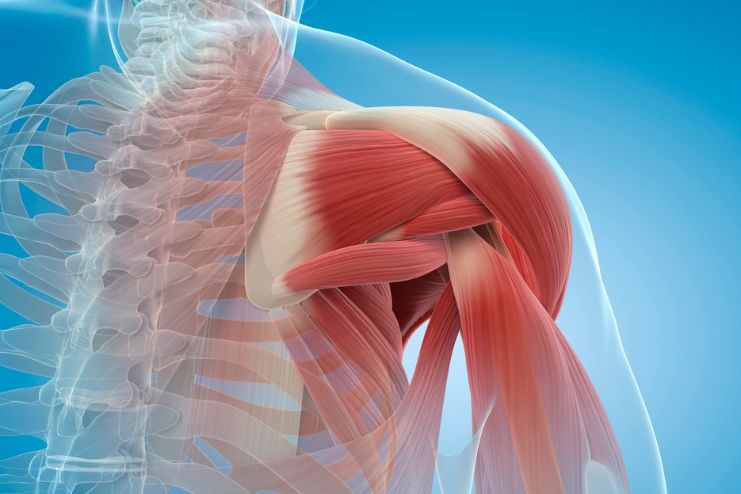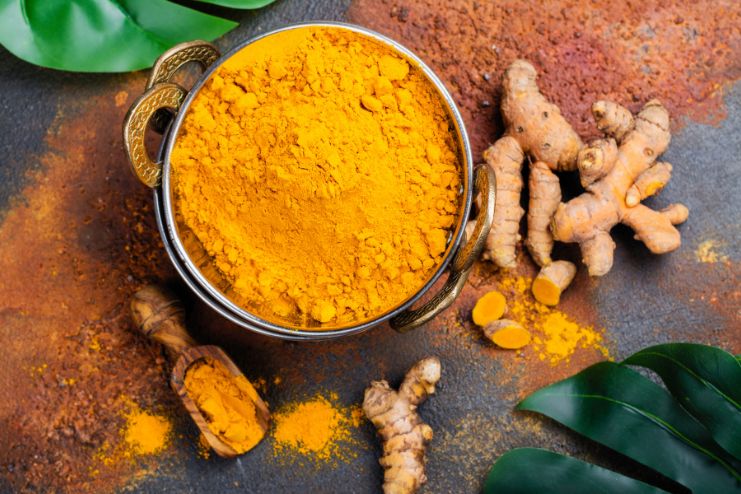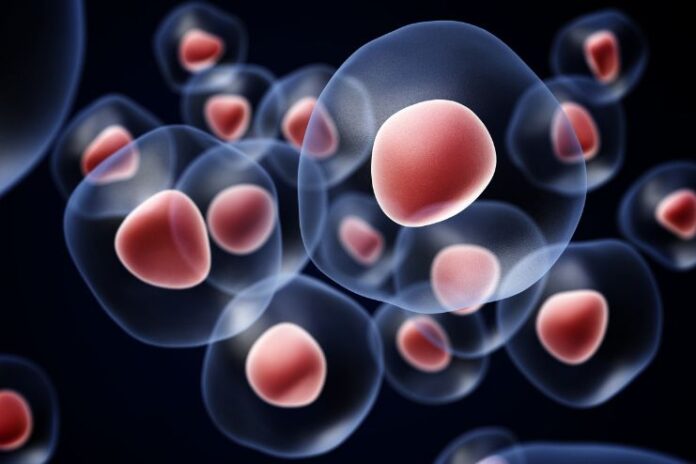Affiliate Disclaimer
Some links in this article are affiliate links. We may earn a small commission if you make a purchase through these links, at no extra cost to you. We only recommend products we find useful to our readersHeat shock proteins (HSPs) are a vital element of the body’s cellular defense mechanism, protecting against stress damage. By promoting cell resilience, HSPs are involved in muscle recovery, protein rehabilitation, and longevity. Sportspeople, biohackers, and scientists are most interested in HSPs due to their ability to accelerate recovery, provide mitochondrial support, and lead to a healthier and extended life.
Heat shock proteins are a group of protective proteins induced by heat and other stress factors. Their major role is to provide correct protein folding, repair protein damage, and uphold cellular homeostasis. Different types of HSPs include:
- HSP70: This is a critical protein for muscle recovery since it prevents protein degradation, stabilizes newly made proteins, and promotes mitochondrial function. It also helps in reducing inflammation and protects against oxidative stress.
- HSP90: HSP90 is an essential protein for cellular stability. HSP90 controls signal transduction pathways so that muscle cells work optimally under stress. It helps stabilize proteins and protects cells from apoptosis (programmed cell death).
- HSP27 & HSP60: These proteins promote cellular resistance by reducing oxidative stress and allowing repair processes. HSP27, for example, helps stabilize the cytoskeleton and prevent muscle fiber degradation, while HSP60 supports mitochondrial integrity and energy metabolism.
- Small HSPs (sHSPs): Small HSPs prevent protein clumping and regulate partially unfolded proteins. They act as the first line of defense against stress-induced protein damage.
- HSP100: These are large chaperones that use ATP to break down protein clumps. This occurs especially during extreme stress. They play a vital role in restoring normal protein function after severe stress.
Read More: 8 Best Plant-Based Proteins for Muscle Building
Heat Shock Proteins and Muscle Recovery

Here’s how HSPs help in muscle recovery and repair:
Reducing Muscle Damage:
Exercise stress can damage muscles and cause proteins to fold incorrectly. Heat shock proteins (HSPs) help protect and repair these proteins, preventing further damage.
- Preventing protein aggregation.
- Promoting muscle regeneration and repair.
- Increasing cellular resilience following intense exercise.
Enhancing Protein Synthesis and Adaptation:
HSPs play a role in muscle recovery by:
- Assisting in mitochondrial function, enhancing endurance and energy production.
- Supporting increased protein synthesis to increase muscle repair and growth.
- Enabling muscles to adapt to frequent exercise stress, enhancing performance with time.
Improving Inflammation Control:
HSPs help control inflammatory processes by:
- Decreasing oxidative damage and cellular injury.
- Modulating immune responses to support recovery without overactive inflammation.
- Providing a more natural approach to conventional anti-inflammatory measures such as NSAIDs and ice baths.
Read More: Soothe Sore Muscles: 7 Top-Rated Massage Guns for Post-Workout Recovery
Heat Shock Proteins and Longevity

HSPs help us with their anti-aging and longevity benefits. Here’s how:
Cellular Protection Against Aging:
HSPs keep cells in good health by preventing the accumulation of toxic proteins linked with diseases like Alzheimer’s and Parkinson’s. HSPs also assist in autophagy, the natural process that recycles damaged proteins and keeps cells in tip-top condition.
Hormesis: The Power of Small Stressors:
Mild stress—heat, cold, fasting, and exercise—triggers HSP production. The controlled stress response strengthens cells, enhances metabolism, and enhances longevity by activating protective mechanisms.
HSPs and Mitochondrial Health:
HSPs maintain mitochondrial function by:
- Maintaining energy production efficiency.
- Preventing mitochondrial deterioration linked with aging and chronic conditions.
- Increasing endurance and the recovery in physically active humans.
Read More: The Link Between Flexibility and Longevity – How to Keep Your Body Young
How to Activate Heat Shock Proteins Naturally
1. Heat Therapy And Sauna Use

When subjected to heat, your body induces a mild stress response that increases HSP production. Here’s what happens:
- Increased HSP Expression:
Heat stress triggers the release of HSPs, which stabilize and refold proteins that have been damaged. This makes your cells more resistant to future stress, including oxidative damage and inflammation.
- Aids in Muscle Recovery and Heart Health:
Sauna bathing increases blood flow, reduces muscle soreness, and preserves cardiovascular function. It has similar effects to moderate exercise, so it is especially helpful after exercise.
- Longevity Boost:
Evidence suggests that regular sauna bathing, that is, 4–7 visits/week, is associated with lower mortality from all causes, partly due to enhanced HSP activity and reduced chronic inflammation
Infrared vs. Conventional Saunas:
Conventional Saunas:
Traditional saunas apply high ambient temperatures (150–195°F) to warm the outside of your body. These work incredibly well to induce surface-level HSPs and mimic the body’s thermal stress response.
Infrared Saunas:
Infrared saunas use lower temperatures (110–140°F) but release infrared light that travels deeper into the body’s tissues, causing more internal heating. This can cause deeper cellular HSP activation and detoxification.
Bottom Line: Both increase HSP levels, but infrared saunas provide more tissue-directed benefits without extreme surface heat.
Read More: 5 Best In-Home Sauna Systems for Detox and Relaxation
2. Exercise & Heat Shock Response

Intense Exercise Stimulates HSP Production:
When exercising, your muscles and tissue heat up, simulating an “in-body heat stress” condition. This causes the cell to induce a defense reaction, increasing HSP levels to safeguard and restore stressed muscle fibers.
HIIT & Strength Training:
These workouts involve short bursts of intense effort or heavy resistance, which significantly stress the muscles.
As a result, HSPs increase to repair microtears, manage oxidative stress, and improve mitochondrial function—all crucial for muscle growth and recovery.
HSPs also help muscles adapt more efficiently to repeated exercise, improving endurance and strength.
Especially intense exercise (HIIT and strength training) triggers HSP production. Here is how:
Endurance Exercise:
Long-duration activities like running or cycling also increase HSP expression—but slightly differently.
The stress is more systemic rather than localized, so the HSP induction may be involved in whole-body resilience and anti-inflammatory effects as opposed to pure muscle recovery.
Endurance athletes have elevated HSP70 levels, which are linked with improved immune function and reduced oxidative damage.
3. Cold Exposure & Contrast Therapy

Cold Exposure Activates Hormesis & HSP Expression
Hormesis is the mechanism through which a low dose of a stressor (such as cold or heat) triggers adaptive responses that are positive in the body. Cold exposure accomplishes this in several ways:
- Cold showers, plunges, or ice baths induce a short-term state of stress in the body.
- This increases norepinephrine levels and induces cold shock proteins, which converge on some of the heat shock protein pathways.
- Although cold therapy does not elevate HSPs directly as heat, it promotes cellular resistance to stress and may help HSP production over time.
Read More: Cold Plunges and Workout Recovery: A Game-Changer or Just Another Trend?
Contrast Therapy:
Contrast therapy is alternating hot and cold—such as alternating between a sauna and a plunge, or taking hot/cold showers.
Here’s why it works:
- Increased Circulation: The sudden changes in temperature cause blood vessels to dilate and then constrict, washing out metabolic waste and delivering oxygen-rich blood.
- Decreased Inflammation & Stiffness: Cold decreases inflammation, heat induces muscle relaxation—combined, they enhance post-exercise recovery.
- Hormetic Synergy: Aggregation of heat stress from both ends prepares the nervous system and stimulates several cellular repair mechanisms, such as HSPs.
4. Dietary and Supplement Strategies

Your diet can influence how well your body produces and utilizes heat shock proteins, particularly through nutritional stressors and protective compounds.
Fasting & Caloric Restriction:
- Intermittent caloric restriction and fasting are gentle stressors that trigger HSP expression as part of the body’s adaptive response.
- Both practices also induce autophagy, the body’s cellular cleaning process—where damaged organelles and proteins are broken down and reused.
- HSPs help in autophagy by eliminating damaged proteins, allowing better cellular function.
Natural Compounds that Support HSP Activation:
Some plant-based bioactive compounds may promote HSP activation and prevent cell damage.
- Curcumin (turmeric):
Curcumin has been shown to upregulate HSP70, lowering inflammation and enhancing mitochondrial protection.
- Resveratrol (red grapes or supplements):
Resveratrol is a gentle cellular stressor that initiates longevity pathways (SIRT1) that converge with HSP production and mitochondrial health.
- EGCG (green tea extract):
Green tea extract is a powerful antioxidant that aids detoxification and can increase heat shock protein levels, especially under oxidative stress.
Practical Takeaways: How to Use HSP Activation for Muscle Recovery & Longevity

It’s worth noting that heat shock proteins (HSPs) are naturally induced by stressors such as heat, exercise, and fasting. Adding these techniques to your regimen can improve recovery, increase resilience, and enhance longevity.
- Sauna Therapy: Take traditional or infrared saunas 3-5 times a week for 15-30 minutes to stimulate HSPs.
- Exercise: Do high-intensity exercise and resistance training to increase the production of HSPs.
- Cold Therapy: Experiment with contrast therapy or periodic cold exposure to promote stress adaptation.
- Fasting: Practice intermittent fasting or restrict calorie intake to maintain autophagy and HSP induction.
- Supplement Wisely: Add natural compounds that induce HSP production for extra benefits.
Who Benefits The Most?
- Athletes: Athletes are benefitted by faster recovery, better strength, and less muscle damage due to increased HSP production. Ongoing HSP activation enables athletes to train harder, recover faster, and sustain optimal performance over time.
- Aging Adults: HSPs benefit aging adults through cellular defense, increased longevity, and lower risk of neurodegenerative disease. HSPs promote brain health, enhance mitochondrial function, and fight age-related decline.
- Biohackers: Maximized stress adaptation and metabolic resilience. Through the strategic application of heat, cold, and fasting, biohackers can optimize their physiology for improved recovery, longevity, and cognitive function.
By stimulating heat shock proteins through heat, exercise, and diet, you support your body’s natural repair process. HSPs repair injured cells, promote stress resistance, and maintain your mitochondria—the powerhouses of your cells to work optimally. This, over time, can result in improved recovery, increased energy, and healthier aging.
Begin by selecting a single habit, such as a brief sauna session or daily exercise, and increase gradually. Small, consistent steps matter for your well-being!
References
- https://www.sciencedirect.com/science/article/pii/S0531556521002916
- https://pubmed.ncbi.nlm.nih.gov/9917879/
- https://pmc.ncbi.nlm.nih.gov/articles/PMC4390795/
- https://pmc.ncbi.nlm.nih.gov/articles/PMC3545644/
- https://www.hubermanlab.com/newsletter/the-science-and-use-of-cold-exposure-for-health-and-performance
In this Article


















